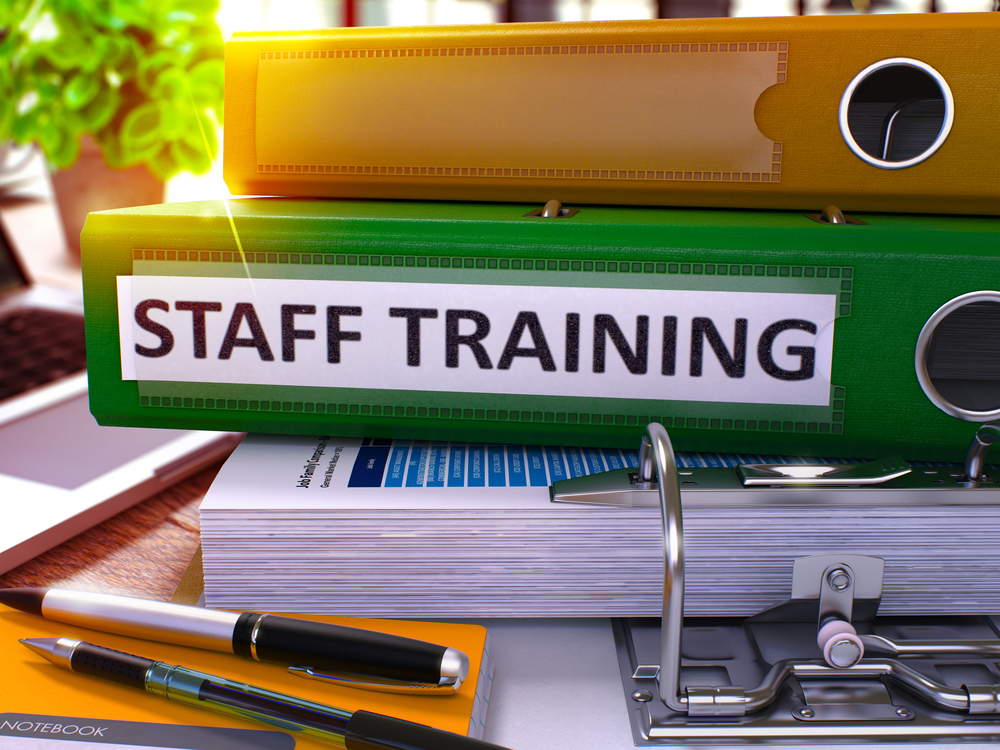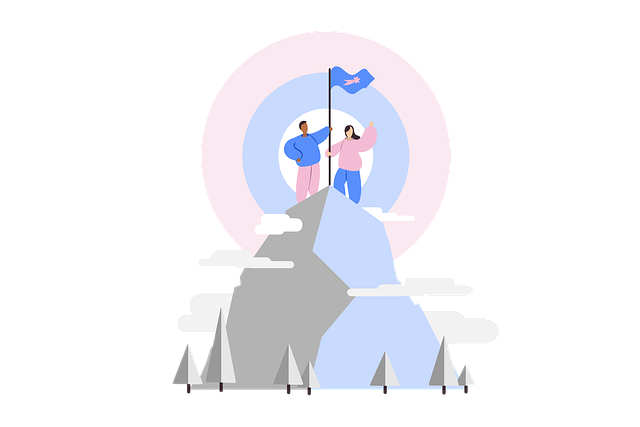The Great Resignation has led to employees around the world demanding more of their employers. Salary, flexibility, and, increasingly, development are at the top of their list. Too few opportunities for development is a massive reason that people are leaving their jobs - 70% of employees say they would leave their current company if they found one with better learning and development. A staggering 94% of leaving employees say that they might have stayed longer if more development opportunities were available.
With numbers like that, most businesses can’t afford to ignore employee development in 2022. It’s become a key element of the employee experience - and this is only going to grow, with Gen-Z rating good development opportunities as their number one deciding factor in looking for a new employer.
Despite all of this, employee development remains a poorly-defined and often overlooked concept. Luckily, we’re here to help. This is the ultimate guide to employee development, covering:
- What employee development is
- Why it’s important
- The benefits of employee development
- Strategies for employee development
- The three main areas of employee development
- Steps for creating your own employee development plan
This guide aims to cover comprehensively all the major aspects of employee development, and help you implement an employee development policy that will get the very best out of your teams.
If you’re interested in an all-in-one solution to your employee development needs, check out what we’ve been building over at 5Mins. We’d love to chat.
What Is Employee Development?
Definition
Employee development is the shared initiative between employee and employer to achieve two goals:
- Strengthening that employee’s skills
2. Advancing that employee’s career along the path that they want
A strong development policy enables both of these goals through high-quality training and an organisational structure that allows employees to grow in the direction that they want to, wherever possible. So employee development encompasses training policy, as well as management skills and organisational design.
Development vs Training
‘Development’ and ‘Training’ are not the same thing. Training only covers the first of the goals above. The key difference is the second goal - development means taking a personalised approach to each employee (sometimes called an ‘employee-led’ approach), and ensuring that the pathways exist for them to feel that they are progressing in the business. Employers should have an understanding of each employee’s needs, and a willingness to help them meet those needs within their business.
Of course, training is a highly important part of this. Strong employee development has to start with strong training. But development needs to go beyond the confines of traditional training. This means:
- Structured training that is continuous and regular, rather than something that happens from time to time in training days. This is sometimes known as a ‘culture of learning’
- Multiple training options to suit individual needs
- A culture of seniors talking with employees about their development regularly and informally - not just leaving it to annual or quarterly reviews
- HR teams keeping track of each individual’s personal goals and progress towards reaching them, and providing the necessary materials for them to achieve those
- An organisational structure that rewards employees who put the most time and effort into their own development
Development Plans
One of the best ways of implementing meaningful employee development is through employee development plans. These are action plans developed between employees and their seniors, usually their line manager, outlining their goals and the necessary steps to achieve them.
Development plans are super valuable for employee development because they give employees a chance to formally state their ambitions, and they give businesses visibility on how they might be able to work with that employee in the future to mutually benefit from their growth. There are more details on creating great development plans later in this guide.
Why is Employee Development Important?
Employee development is more important than ever, in terms of both employee retention and workforce productivity.
Employees are demanding more
Employees everywhere are demanding more focus on their development. 74% of workers say that a lack of employee development opportunities is preventing them from reaching their full potential. 34% of employees said that they had left a job due to a lack of development opportunities.
At a time when huge numbers of employees are handing in their notice, it should be a no-brainer for businesses to start investing in one of the main reasons that they are doing so. Many major business players are doing just that. JPMorgan recently more than doubled their annual upskilling budget to $600 million and Amazon announced a $700 million boost to their training program in 2021.
Businesses need to be future-proofed
Back in the day, people’s initial training and education was enough to teach them everything they’d need to know for their whole careers. This is no longer true - many industries require different skills to what they needed just 5 years ago, and they may need a whole new skillset again in 2-3 years time.
This leads to ‘skills gaps’ - the space between the skills your business needs and the skills your employees have. The higher the rate of technological change, the more quickly skills gaps will develop. And technology isn’t slowing down anytime soon!
It’s not just a nice-to-have, but a strategic necessity for businesses to make sure they are addressing the skills gaps in their workforce. This is why employee development is now one of the most sought-after services provided by the big consultancies - such as in this initiative by PwC.
What are the Benefits of Employee Development?
How does employee development contribute to the success of your company? Here are the main benefits to employee development:
1. Improved performance
The simplest and most valuable benefit to employee development is the proven effect it has on your people’s performance. Research shows that companies in multiple industries who invest in employee development see higher performance across all departments.
One especially interesting finding is that performance is improved even more in companies who take a development-led approach rather than a training-led one. ‘Development-led’ means an approach that focuses on the employee’s needs first and foremost (rather than those of the business).
2. A more motivated and engaged workforce
Engagement is one of the most overlooked factors in business productivity. According to the Dale Carnegie Institute, businesses with more engaged employees saw 202%(!) greater productivity. In light of this, it seems crazy that employee engagement is rarely included in businesses’ operational planning and analysis.
One of the easiest and most effective ways to create a more engaged workforce is through investing in their development. Employees who feel that their organisation is investing time into them and working with them to achieve their goals are more engaged and feel more invested in their work - businesses who take an employee-led, bespoke approach to development see 23% higher engagement levels.
3. A culture of learning (and the talent that attracts)
The ‘culture of learning’ is the holy grail for most L&D professionals. If you can get people to share their learning with one another, and create a bottom-up, employee-led learning environment, you’ll have an L&D structure that’s both more engaging and more cost-effective.
A focus on employee development can help to foster a culture of learning by making employees feel that they have the freedom to lead on what they want to learn. If employees feel that their own development needs are understood, through personalised development plans and the like, they’ll be much more likely to engage in that process.
Cultures of learning also attract the top talent. The organisations with some of the best learning cultures in the world put it as one of their headline values in the recruitment process - and attract the very best candidates as a result.
4. Less money spent on new hires
Some leaders might be sceptical about spending huge sums on employee development - but the hidden costs you can save on are huge. One of these is new hires: it costs an average of £11,000 to lose an employee and hire a new one. In light of that, even if you’re investing several thousand a year on each employee’s development, you’re still likely to be saving yourself money.
Furthermore, when hiring for senior positions, companies with strong development policies will have a ready-made pool of candidates with the perfect knowledge and experience at their fingertips. The potential upsides of that are enormous.
5. A more adaptable workforce
Bill Gates reckons Microsoft succeeded thanks to hiring generalists. People who take the time to learn about a wide range of things, and build a broad arsenal of skills, are much more adaptable. In a world in which markets and industries are always changing, this is one of the most valuable assets a workforce can have.
Employee development can broaden your workforce’s knowledge base by giving employees the opportunity to steer their own learning. When executed well, this will lead to teams that are knowledgeable about a whole range of stuff - and more adaptable as a result.
Employee Development Methods and Strategies
So how are we going to implement employee development in our organisations? The most effective employee development strategies all start with the same principle - put the employee’s needs first. The evidence is that employee-led development sees better results across the board, in terms of retention, engagement and performance.
With that in mind, here are the best methods for bringing employee development to your organisation:
The right kind of training
While we’ve emphasised that training isn’t the only thing to consider, it is, of course, an absolute cornerstone of strong employee development. But the wrong kind of training can do more harm than good. Remember - personalisation is key. The traditional, by-the-book, one-size-fits-all approach to training is going to leave most employees cold.
If you want to optimise your training so that employees feel they are really developing, there are several points to remember:
- Listen to your employees: a major reason for people feeling disengaged from training is that they feel it isn’t relevant to them. When planning training materials, include your employees in the process, so that they can be assured of learning the right skills for them.
- Think about your resources: boring or low-quality materials are an instant turn-off for most learners. Take time to find materials and instructors that will inspire your teams rather than make them cringe!
- Encourage on-the-job training: a great way to get employees to feel that development doesn’t stop with training is to encourage managers to share their expertise with their teams in their day-to-day work wherever possible
- Keep it short: the average modern adult has an attention span that is shorter than a goldfish - yup, really 😞. Don’t bore your employees with hours and hours of training, because they’re much less likely to engage that way
Genuine mentoring
Most managers understand that their role isn’t just to delegate and supervise. A crucial part of their function is to act as a mentor to their team. This isn’t just a nice-to-have. Organisations with mentorship programs see much higher rates of employee engagement - 89% of workers in organisations with mentorship programs say they feel their work is valuable, compared to 75% who do not have mentors.
In other words, if you want employees to feel that they are making valuable development, it’s crucial that they feel they have a mentor who has their back. Here are a few tips for working mentorship into your employee development program:
- Make it a full-time exercise: too many managers view mentorship as something that only needs to be done in dedicated time slots such as quarterly reviews. This is an attitude that leads employees to feel undervalued. Mentorship should be a constant - if a junior employee needs help, they should be able to approach their mentor about it straight away
- Be mindful of time: this might sound contradictory to the point above, but the two can work together. While mentors should always make time to talk, it’s equally important that juniors don’t feel that their own time is being wasted. Keep compulsory meetings short - just make sure they’re aware that you’ll make the time if they need it
- Mentor at all levels: Most organisations confine their mentorship to junior employees. But development doesn’t stop at the management level (far from it!). If you want to retain your senior people, it’s just as important to maintain their development
Career planning
Employee development is about more than just training - it’s about demonstrating and creating pathways to accommodate the direction in which that person wants to grow. A great way to do this is through career planning.
Career planning means either HR or management taking the time to talk to each employee about their plans, and, where possible, taking steps to help them achieve those goals within the organisation. It can be the ultimate retention tool - one of the major reasons people leave their jobs is a lack of career growth, with 70% of employees saying they’d leave their current employer for one that is able to advance their career growth further.
Employee Development Areas
If you are designing an employee development program, there are three main areas of development to consider. These are:
- Hard or technical skills
- Soft or power skills
- Life skills.
Programs that help employees to upskill in all three of these areas will be hitting the two key goals of improving their employees skills, and helping them to feel that they are advancing in their careers and lives.
We’ve done the hard work and created skill maps for a huge number of jobs in a range of functions industries. Check out our skill matrix here and download your free copies!
So, let’s break down the skill areas a little:
Hard/Technical Skills
Any workplace learning needs to start with hard skills - the stuff that is specifically useful for people’s jobs. 80% of employees want more hard skill training. This shouldn’t come as a surprise - the quickest way to help someone get better at their job is to focus on the skills that are core to it.
Some examples of hard skills are:
- Software Design
- Business Development/Prospecting
- Search Engine Optimisation (SEO)
- Performance Management
These are just a handful of skills - take a look at the skill matrix to get some more ideas for the hard skills that apply to many different roles!
Soft/Power Skills
Soft skills are the skills that apply to most people in most roles - the non-technical skills that aren’t exactly taught in most traditional education programs. Soft skills are often to do with behaviour and relational skills - communication, leadership and teamwork, for example. No-one is ever really formally taught these skills at school or university, so businesses have take a proactive approach to making the resources available for their people to learn them.
While soft skills are less job-specific than hard skills, there are certain skills that are especially useful in certain jobs. Take a look at our skill matrix to see which skills could be valuable to you!
Some examples of soft skills are:
- Communication
- Stakeholder Management
- Creative Thinking
- Teamwork & Collaboration
Life Skills
Life skills are skills that apply to people’s lives outside of work. This might include their wellbeing, and their ability to handle the different challenges life throws at them.
The ROI on hard and soft skills is very clear. Some people might find it harder to see the value of life skills for businesses, in comparison. But there are strong cases to be made for developing your employees’ life skills, both strategically and because it’s the right thing to do!
It’s estimated that if more UK businesses provided some basic mental health support, they’d be saving themselves in excess of £8 billion a year.
Some examples of life skills that you could help develop for your employees are:
- Mental Wellbeing
- Managing Money
- Physical Wellbeing
- Stress Management
5Mins is the only workplace learning platform that lets you learn and track your progress in all three of these areas. Our AI-based skills mapping will identify the core hard and soft skills needed in your role, and you can also choose which life skills you’d like to focus on developing.
5 Steps for Creating Your Employee Development Plan
We’ve now discussed why employee development is valuable, methods for implementing it, and the three major areas to focus on in your development program.
The final point to consider is arguably the most important - creating a clear, focused employee development plan.
Employee development plans, as we discussed earlier, are action plans developed between employee and employer to help them achieve mutually beneficial goals. It’s vital that these have some element of personalisation to them - the whole point is to ensure that the employee feels personally listened to (and accountable!) when setting their goals.
We recommend creating and updating employees’ plans on a semi-regular basis - monthly or quarterly is best. The best way to do this is in a one-on-one with their line manager.
There are five steps you should take when creating an employee development plan. These are designed to maximise the impact of this plan both for the employee and for your business.
Step 1: Establishing Business Goals
HR teams and line managers need to be aware of the high-level goals and strategies of the business before creating any employee development plan. This is because any plan needs an objective - businesses need to know their direction of travel before they start upskilling their people.
This can be best accomplished by making a macro-level business assessment. These are the major high-level goals of your organisation:
- Where does your business want to be five years from now?
- What areas of your industry do you see becoming more competitive?
- Are there any specific expansion plans in the works?
- What technologies could be deployed to improve your business?
Once you’ve established these high-level principles, narrow them down to specific skill areas. For each of the questions above, you should establish what skills your people need to achieve those goals.
Step 2: Establishing Employee Goals
It goes without saying that the key actor in employee development will be the employee themselves. As such, it’s important to involve them in the employee development plan from an early stage.
Approach your employee with the high-level goals you established in Step 1. Ask them their opinions on them - and how they think they might be able to contribute to helping the business achieve them. Discussing this before you discuss the employee’s personal goals will help you both to understand the ways in which those aims might be aligned.
Then ask the employee what their own working goals are. These might include increased responsibility, new performance targets or promotions. It’s important to take the time to listen to all of the employee’s goals at work.
From this you can map out development areas. Often this will mean identifying the specific skills needed to meet abstract goals. For example - of an employee wants to get better quarterly sales results, you can discuss which skills will help them do this. This is where a skills matrix can be really useful.
Step 3: Developing an Action Plan
Once you’ve listened to the employee’s goals, and established the development areas needed to achieve them, you should work with them to create an action plan that meets their needs and the needs of the business.
There are several different approaches to doing this, but we recommend a 70/20/10 approach. 70% of their development should come from on-the-job learning, 20% from other people, and 10% from structured training.
Discuss ways in which they can tailor their on-the-job training to meet the development areas you have identified. This might mean talking with their manager to ensure they are getting the right exposure to the areas where they could see the most valuable improvement.
You should also take action to help them facilitate the ‘learning from others’ element of 70/20/10. This might mean communicating the employees’ development areas to senior team members, who can share their knowledge with that team member as and when it’s necessary.
Finally - and this is where HR pros need to pay the most attention - is the structured training element. This means getting formal training in place to help the employee hit their goals in the development areas you have discussed.
There are a wide range of options out there for training - take a look at our advice earlier in this guide when it comes to picking the right kind of training for your people.
Step 4: Establish a Measurable Development Pathway
Once you’ve got your action plan, you should set concrete goals for their development. This means specific targets that will demonstrate the employee hitting their goals.
This might seem tricky to do in some instances. Sure, it’s easy to measure someone’s development is they’re learning Python, but how can you set measurable goals for soft skills? What empirical results are there for people improving their communication skills?
This is where gamified learning can be really valuable. While you can’t set specific targets for improvement of soft skills in terms of real-world effectiveness, you can set learning targets - completing x course, or spending y amount of time focusing on a particular skill.
Several platforms (including - you guessed it - 5Mins AI!) allow you to track your progress in a range of different skills numerically. You can also maintain a daily streak, and compete with your teammates on monthly and weekly leaderboards.
Using gamified techniques, you can create quantifiable performance indicators in pretty much any skill - so try incorporating this into your development plan to help employees have clear goals to hit.
Step 5: The Realisation Stage
You’ve now got your plan together, with goals, development areas, an action plan and measurable targets.
The next step is to take action to help the employee realise their employee development plan. This might mean introducing them to a training platform, setting up lessons and sessions, or planning group training days and activities.
It’s important to keep this realisation stage personalised where you can - try to avoid making one-size-fits all training plans. Different training styles work for different people, so try to ensure that the employee has different options to choose from when going about their training.
.png)




